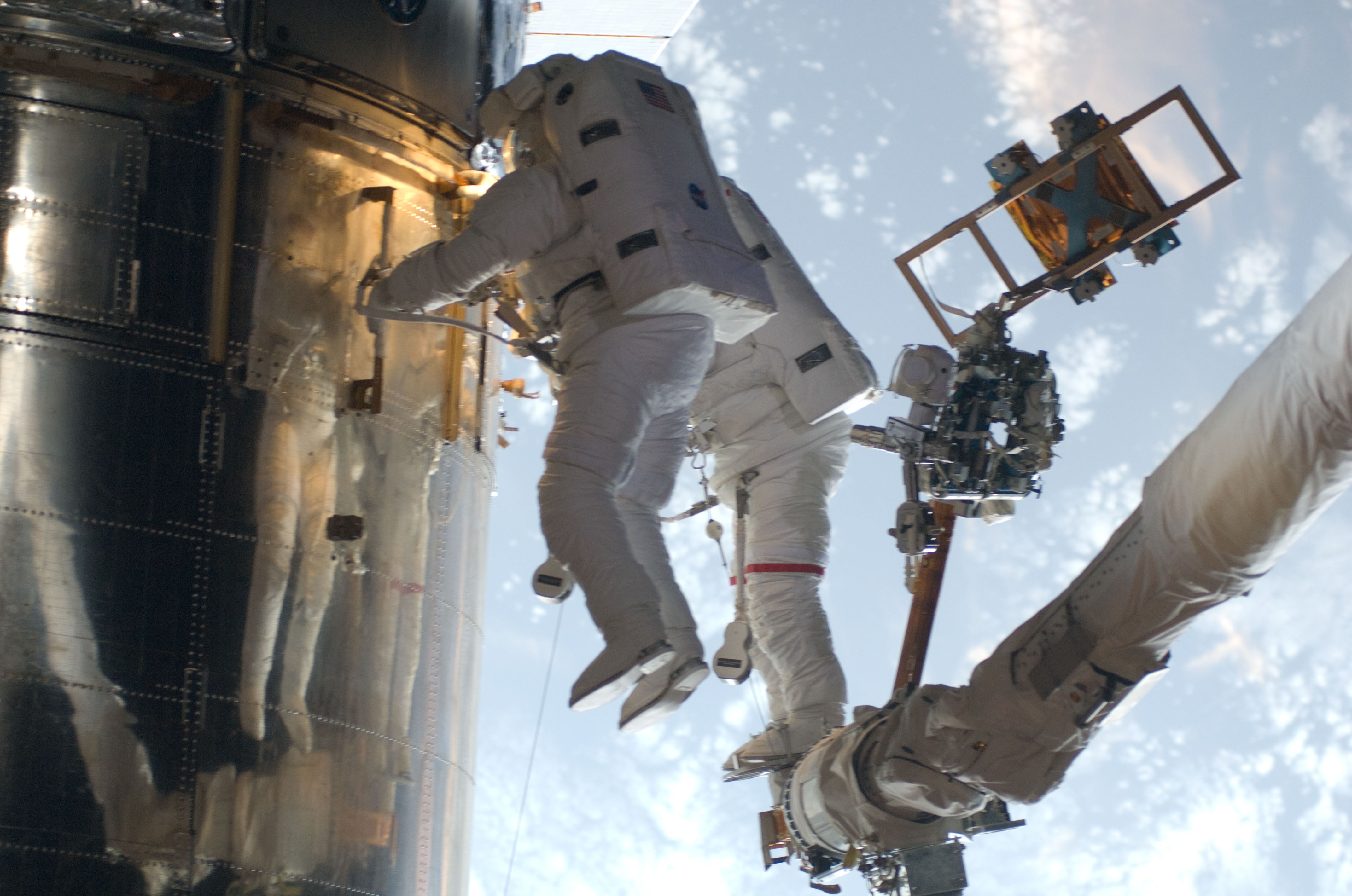‘The little telescope that could’
Hubble Space Telescope faces an uncertain future as it approaches its 25th birthday
Nicole J Lou • December 2, 2014

The crew of STS-125 performed spacewalks to repair Hubble in 2009. [Image credit: Wikipedia Commons]
The Hubble Space Telescope hurtles through space in a seemingly lonely orbit. Launched in 1990, it has passed its teen idol stage – when it found fame in science classroom posters – and is now settling into the gravitas of its final years. Humans, meanwhile, decided never to visit it again and are instead awaiting its demise with bittersweet anticipation.
And yet Hubble continues to surprise us with its resiliency. Repairs by spacewalking astronauts in 2009 were supposed to extend its life only until mid-2014, yet the telescope is still capturing images of distant galaxies, even as its orbit begins to gradually decay from being hit with solar emissions. The sturdy satellite slowly descends toward Earth on the way to a fiery breakup in the atmosphere – probably in a few more years.
At only 2.4 meters wide, Hubble is “the little telescope that could,” said John Grunsfeld, one of the astronauts involved in the 2009 repair mission and the then-director of the Hubble science program at the Space Telescope Science Institute in Baltimore, Maryland.
Grunsfeld and four of the six other crew members who were aboard space shuttle Atlantis for that 2009 trip gathered Nov. 12 at the Intrepid Sea, Air and Space Museum in New York for a reunion celebration and discussion of the overachieving telescope’s many scientific contributions.
“The telescope was designed for certain questions, but some of its biggest discoveries were answers to questions we weren’t even smart enough to ask,” said Megan McArthur Behnken, the crewmember who operated Hubble’s robotic arm. Before this fifth and final repair mission, Hubble had already been involved in some important breakthroughs in space science as it found evidence supporting the existence of black holes as well as dark energy, the mysterious force behind the accelerating expansion of the universe.
But when the repair crew reached Hubble, the telescope was only working at 20 percent capacity.
The Atlantis astronauts installed new parts, including thermal insulating panels and new batteries. The most important installation, however, was the Wide Field Camera 3, a powerful camera that detects visible light, ultraviolet rays and near infrared emissions.
The crew also installed the Soft Capture and Rendezvous System, a tool to send Hubble back to Earth on a robot upon its demise. When the telescope finally succumbs to old age, the robot will throw it into a burning trajectory toward an ocean, splintering into small pieces during its final minutes.
Exactly when time will run out for Hubble remains a mystery, and after being repeatedly surprised by its durability, the Atlantis crew members are reluctant to write its obituary just yet. “The warranty of the parts just ran out in May 2014,” said Michael Good, a spacewalker in the crew. The crew expected the telescope to end its run sometime this year, but that hasn’t happened yet. The remaining time for Hubble depends on how much longer its gyroscopes and batteries will last, as well as how long it can stay above Earth. Because of the sun’s energy emissions, which produce solar particles that create drag for an orbiting spacecraft, Hubble has already started its slow descent towards Earth.
“Eventually it will be too low in the atmosphere to observe anything. But the sun has been pretty quiet. Maybe Hubble will last to 2020 and beyond,” said Grunsfeld.
Hubble may be alone now, but it’s not forgotten – especially by the men and women who extended its phenomenally productive life far beyond anyone’s reasonable expectations. And the telescope’s final surprise is yet to come, as it keeps the world guessing in anticipation for its final, fiery bow.